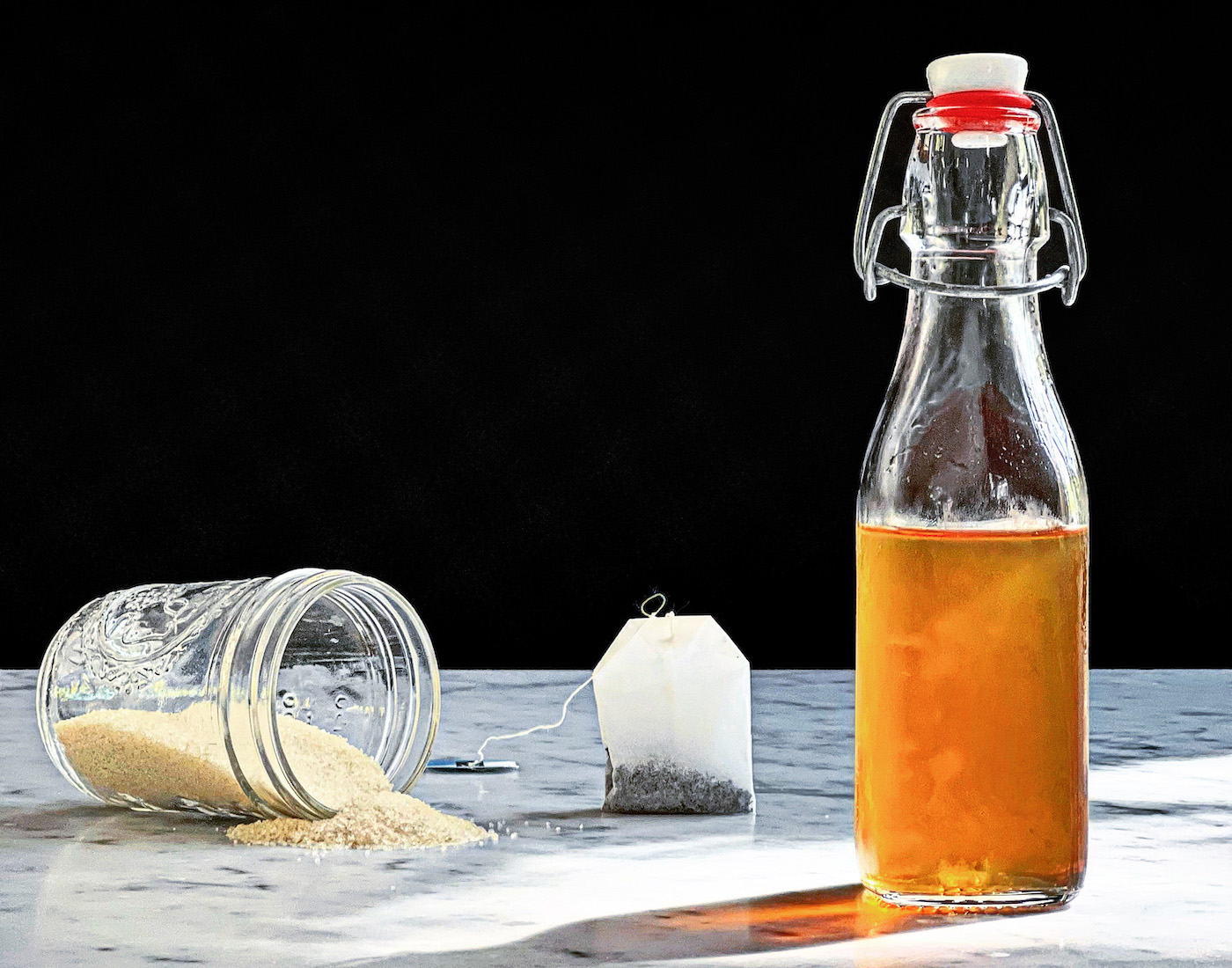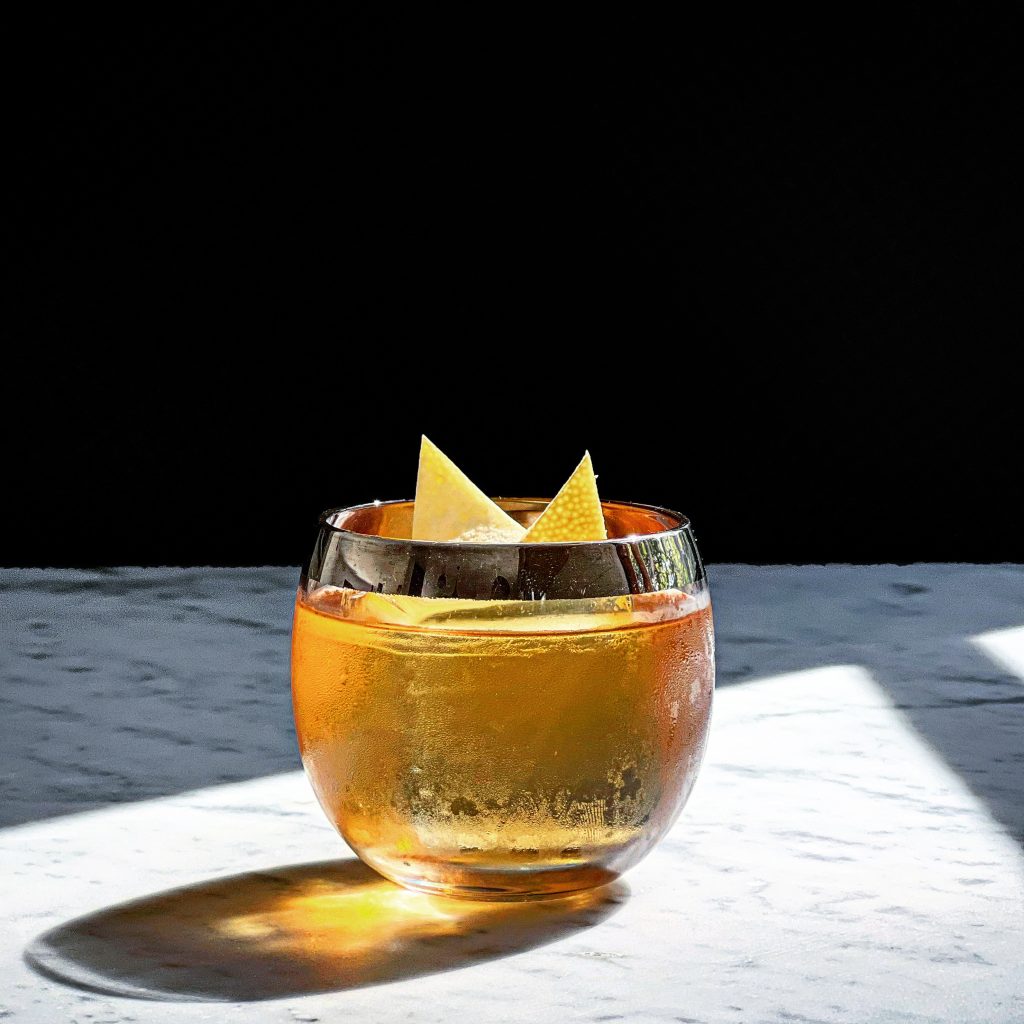As Simple as Syrup

At its heart, a cocktail is defined as having three parts: spirit, sugar, and bitters. Today we’re going to dive a little deeper into the world of sugar and sweeteners for cocktails. As I discussed in a previous article, sweet is one of the most important components for balancing a cocktail. Additionally, it is one of the easiest, most versatile ingredients you can play with to raise your home bar game and incorporate new flavors into cocktails.
The Concept
Originally many cocktails called for the inclusion of sugar directly in the cocktail. A classic example is the Old Fashioned cocktail, which uses whiskey, sugar, and Angostura bitters. Crystallized sugar is difficult to fully dissolve and incorporate into a drink, which leads to an unbalanced cocktail, and gritty texture from the sugar crystals. The solution is to dissolve the sugar in water to create what is now a cocktail standard: simple syrup. This small change has a huge impact and facilitates the consistent distribution of the sugar throughout the cocktail. It also opens up a world of potential for infusing flavor into the sweetener to add beautiful layers and complexity to your drinks.
The Details
Classic simple syrup is made using equal parts of sugar and water, i.e. one cup of water to one cup of sugar. Add the ingredients to a pan, heat just to a boil, turn off, and stir until fully dissolved. Once dissolved, let cool slightly and pour into a container with a lid and refrigerate. The syrup can be stored for a week or longer (adding an ounce of vodka will extend this timeframe). A rich simple syrup is where you change the ratio, typically two parts sugar to one part water; this requires less syrup in the cocktail and keeps for longer than regular simple syrup.
The magic of simple syrup starts to show itself fully when we broaden our horizons and think about the sweetener as a component of flavor. There are so many different types of sweetener beyond regular sugar: demerara, agave, honey, maple syrup, and the list goes on. Demerara sugar is less refined and is taken before the molasses is extracted so it retains a deeper, richer flavor. It pairs particularly well with brown spirits like whiskey and aged rum.
Agave nectar is a sweetener refined from the agave plant. I prefer the darker versions, which have a more full-bodied flavor. Agave is sweeter than regular sugar and hits your tastebuds a little more quickly upfront – but doesn’t linger quite as long. Agave syrups go well with agave spirits like tequila and mezcal.
Honey is another fantastic sweetener, but is also hard to mix with, unless combined with water into a syrup. Honey comes in many different varieties – some more subtle, some more pronounced – and is used in a few classic cocktails such as the Bee’s Knees (with gin) and hot toddies (with whiskey).
Maple syrup isn’t just for pancakes and goes particularly well with whiskeys. Orgeat is made with almonds and is found in many tiki drinks. Coconut palm and date syrup bring yet more dimensions. Gum, or gomme, syrup uses gum arabic incorporated in your syrup to create a silky, luscious mouthfeel in a cocktail.
Another, equally important, aspect of simple syrup is with flavor infusion. Water extracts flavor from many ingredients. Fresh herbs and edible flowers, like rosemary and lavender, can be steeped in the hot simple syrup. Turn the heat off, add rosemary or lavender, let steep for a couple of hours, and then strain it. Fruits like strawberry and raspberry I simmer for a little while, 10 – 15 minutes, and then steep before straining. You can use a cool extraction by letting ingredients steep in syrup overnight in the refrigerator before straining and retaining.
When using a new ingredient, I test a couple of different techniques and taste them periodically to see how the syrup is progressing before I settle on my preferred method and infusion time. Alternatively, there are recipes online for as many types of syrup as you would like to try.
Perhaps the simplest idea is to use tea bags to flavor your simple syrup. The incredible range of flavors and layered complexity that can be achieved is stunning. You want the starting tea to be much stronger than you would normally drink because you only add a small amount of the tea syrup to your cocktail. My starting point is four tea bags to a cup of hot water and steeped for the normal amount of time or a little longer if the tea won’t become too bitter. Then I mix the hot tea with an equal amount of sweetener (take your pick) and stir until dissolved.
The Cocktail Inspiration

For a beautiful example of how a simple syrup can offer a new take on a classic cocktail, let’s mix up one of my favorites! I am a huge fan of bergamot and Earl Grey tea. These flavors happen to pair so well in an Old Fashioned. Layers of bergamot, Earl Grey, whiskey, and lemon waft on the nose and tease the palate in this delicious sip!
Earl Grey Old Fashioned
2 oz whiskey (High West Double Rye)
1/4 – 1/2 oz Earl Grey Simple Syrup (to taste, directions below)
1 dash Angostura bitters
1 dash bergamot bitters (Scrappy’s)
Garnish: Twist of lemon
Directions
Add all the ingredients except the garnish to a mixing glass. Add ice and stir until chilled and diluted, about 20 – 30 seconds. Strain into a rocks glass with a large cube of ice. Express a twist of lemon over top and garnish.
Simple syrup directions: Mix 8 ounces of boiling water with four Earl Grey tea bags. Let them steep for about 6 – 10 minutes. Remove tea bags and mix with an equal volume of sugar, about a cup. Stir until the sugar dissolves completely and store in the refrigerator for up to a week.
Ian Wickman creates exceptional craft cocktails honed to the seasons. Recipes, photography, and writing for brands, media, restaurants, events, and individuals. idealistfoods.com; Email: ian@idealistfoods.com; Instagram: @idealistfoods







You must be logged in to post a comment.